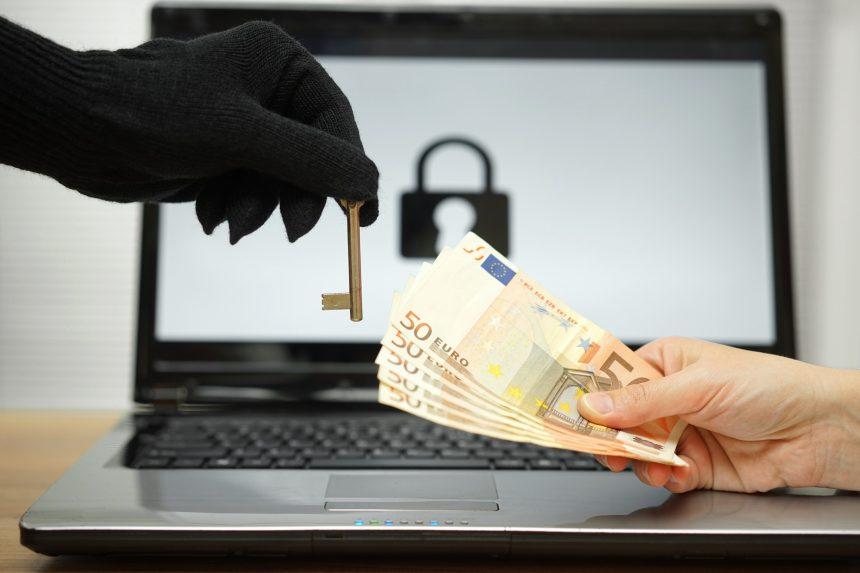In the evolving landscape of cyber threats, Vezaransomware has emerged as a particularly insidious form of malware. This ransomware variant encrypts victims’ files, demanding a ransom for their release. Understanding the nature of Vezaransomware, its actions, and the consequences it brings is crucial for individuals and organizations aiming to safeguard their data and systems. This article provides a detailed overview of Vezaransomware, including detection names, similar threats, a comprehensive removal guide, and best practices for preventing future infections.
Actions and Consequences of Vezaransomware
Actions of Vezaransomware
Vezaransomware, like other ransomware, operates by infiltrating a victim’s system and encrypting essential files using a robust encryption algorithm. Once the encryption process is complete, the malware generates a ransom note, typically instructing the victim to pay a specified amount in cryptocurrency to a given address in exchange for the decryption key. Key actions include:
- Initial Infection: Vezaransomware often infiltrates systems through phishing emails, malicious downloads, or exploiting vulnerabilities in outdated software.
- Encryption: Upon gaining access, it scans the system for files with specific extensions (e.g., .docx, .xlsx, .pdf) and encrypts them, rendering them inaccessible.
- Ransom Note Delivery: A ransom note, often named something like “README.txt” or similar, is placed in each affected directory and displayed on the desktop. This note provides payment instructions and warns against attempting to decrypt files without paying.
Consequences of Vezaransomware
The consequences of a Vezaransomware attack can be severe, impacting both individuals and businesses:
- Data Loss: Without access to the decryption key, victims face the permanent loss of important data.
- Financial Impact: Paying the ransom can be costly, and there is no guarantee that the attackers will provide the decryption key even after payment.
- Operational Downtime: Businesses may experience significant operational disruptions as they attempt to restore data and resume normal activities.
- Security Risks: The presence of ransomware indicates potential vulnerabilities in the system, which may be exploited by other malware if not addressed.
Victims of the Veza Ransomware are left with the following ransom note:
‘ATTENTION!
Don’t worry, you can return all your files!
All your files like pictures, databases, documents and other important are encrypted with strongest encryption and unique key.
The only method of recovering files is to purchase decrypt tool and unique key for you.
This software will decrypt all your encrypted files.
What guarantees you have?
You can send one of your encrypted file from your PC and we decrypt it for free.
But we can decrypt only 1 file for free. File must not contain valuable information.
Do not ask assistants from youtube and recovery data sites for help in recovering your data.
They can use your free decryption quota and scam you.
Our contact is emails in this text document only.
You can get and look video overview decrypt tool:
Price of private key and decrypt software is $980.
Discount 50% available if you contact us first 72 hours, that’s price for you is $490.
Please note that you’ll never restore your data without payment.
Check your e-mail “Spam” or “Junk” folder if you don’t get answer more than 6 hours.
To get this software you need write on our e-mail:
support@freshingmail.top
Reserve e-mail address to contact us:
datarestorehelpyou@airmail.cc
Your personal ID:’
Detection Names and Similar Threats
Various cybersecurity firms may identify Vezaransomware under different names. Some common detection names include:
- Trojan-Ransom.Win32.Vezar
- Ransom:Win32/Vezar.A
- Win32/Filecoder.Vezar
Similar ransomware threats that share operational characteristics with Vezaransomware include:
- Wannacry: Known for its rapid spread and extensive damage, Wannacry exploits a vulnerability in the Windows operating system.
- Locky: This ransomware encrypts files and demands payment in Bitcoin, similar to Vezaransomware.
- CryptoLocker: One of the earliest and most notorious ransomware variants, known for its use of strong encryption and demanding high ransom payments.
Comprehensive Removal Guide
Removing Vezaransomware involves several steps. It’s critical to follow these carefully to ensure complete eradication of the malware and recovery of your files where possible.
Step 1: Isolate the Infected System
- Disconnect from the Network: Immediately disconnect the infected device from any network (Wi-Fi, wired connections) to prevent the ransomware from spreading to other systems.
- Shutdown and Boot in Safe Mode: Restart your computer and boot into Safe Mode to prevent the ransomware from launching automatically.
Step 2: Identify and Terminate Malicious Processes
- Open Task Manager: Press
Ctrl + Shift + Escto open the Task Manager. - End Suspicious Processes: Look for processes with unfamiliar or suspicious names and end them. Be cautious to avoid terminating critical system processes.
Step 3: Remove Vezaransomware Files
- Navigate to Startup Programs: Type
msconfigin the Run dialog (Win + R) and go to the Startup tab. - Disable Suspicious Entries: Disable any entries related to Vezaransomware.
- Delete Malicious Files: Manually search for and delete files related to Vezaransomware. Common locations include:
C:\Users\[Your Username]\AppData\Local\TempC:\Users\[Your Username]\AppData\Roaming
Step 4: Restore Your Files
- Use Backups: Restore your files from a recent backup if available.
- Shadow Copies: If System Restore was enabled before the infection, restore files from shadow copies. Use software tools designed to recover shadow copies if necessary.
Step 5: Comprehensive System Scan
- Run a Full System Scan: Use built-in antivirus software or other trusted security tools to perform a full system scan, ensuring all remnants of Vezaransomware are removed.
Best Practices for Preventing Future Infections
- Regular Updates: Keep your operating system and all software updated to patch known vulnerabilities.
- Email Caution: Be vigilant with email attachments and links. Do not open suspicious emails from unknown senders.
- Backup Data: Regularly back up important data to offline or cloud storage solutions.
- Use Strong Passwords: Employ strong, unique passwords for all accounts and enable multi-factor authentication where possible.
- Security Software: Ensure you have robust security software installed and updated regularly to protect against various cyber threats.
By following these guidelines, you can effectively respond to a Vezaransomware infection and bolster your defenses against future cyber threats.





